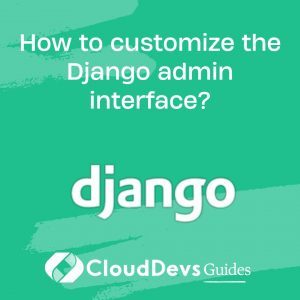Django Q & A
How to customize the Django admin interface?
Customizing the Django admin interface is a common requirement to make it more user-friendly and tailored to your application’s needs. Django provides several ways to customize the admin interface:
- Admin Classes: You can create custom admin classes for your models by subclassing `admin.ModelAdmin`. Within these classes, you can define various attributes and methods to control the display and behavior of the model in the admin interface. For example, you can specify the list of fields to display, prepopulate fields, and customize list views.
- Admin Templates: Django’s admin interface uses templates for rendering pages. You can override these templates to change the look and feel of the admin site. To do this, create a directory named `admin` within your project’s templates directory and place customized template files inside it. Django will automatically use your templates instead of the default ones.
- Custom Admin Views: If you need to create custom admin views or pages, you can define custom admin views using Django’s view system. You can then add URLs for these views in your `admin.py` file, giving you complete control over the admin interface’s functionality.
- Custom Admin Actions: Django allows you to create custom actions that can be performed on selected objects in the admin interface. This is useful for batch processing or performing specific tasks. Define these actions in your admin class and add them to the admin actions dropdown.
- Admin Inlines: When dealing with related models, you can use inline admin classes to edit related objects directly from the parent model’s admin page. This can help streamline data entry and management.
- User Permissions: You can control which users or groups have access to specific admin views or actions by defining custom permissions and using Django’s built-in permission system. This allows you to restrict access to certain parts of the admin interface based on roles or responsibilities.
- Third-Party Packages: Django offers various third-party packages and extensions that provide additional admin customization options. Popular packages like Django Suit, Grappelli, and Django Jet can enhance the admin interface’s appearance and functionality.
By leveraging these customization techniques, you can create a Django admin interface that aligns perfectly with your application’s requirements and provides an efficient and intuitive experience for administrators and content managers.

Previously at


Argentina

GMT+2
Experienced Full-stack Developer with a focus on Django, having 7 years of expertise. Worked on diverse projects, utilizing React, Python, Django, and more.


